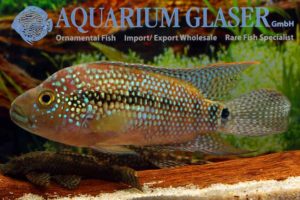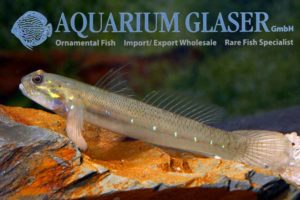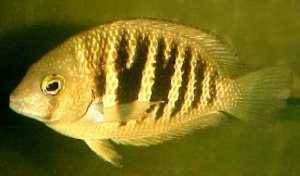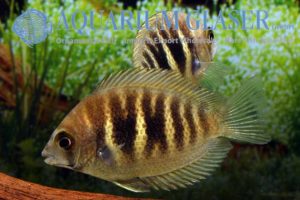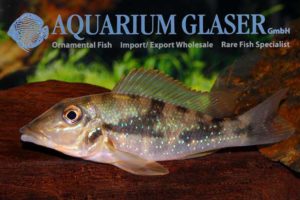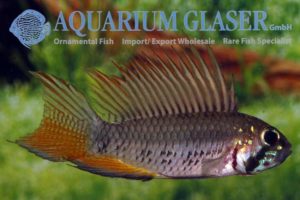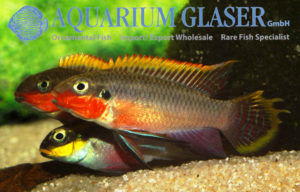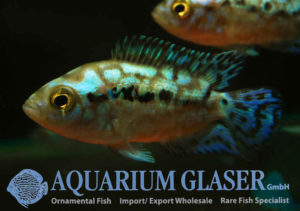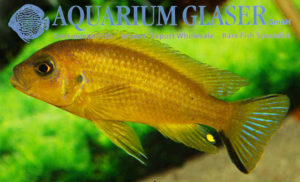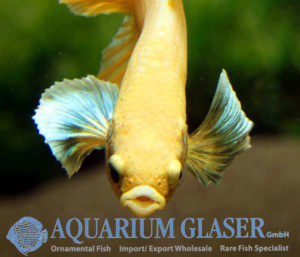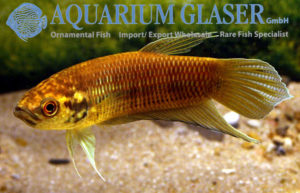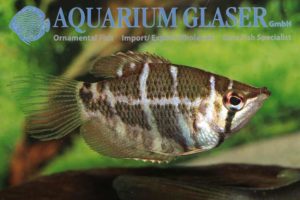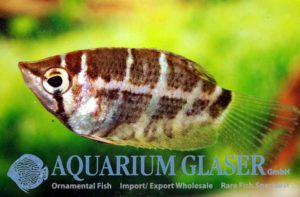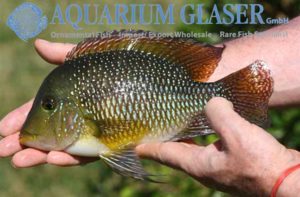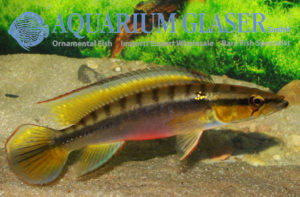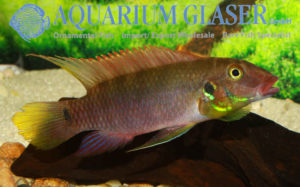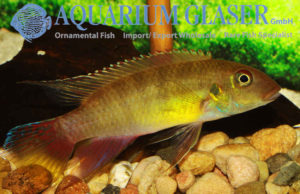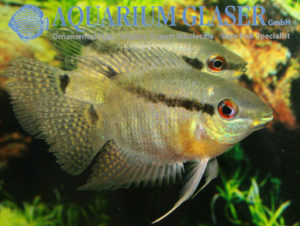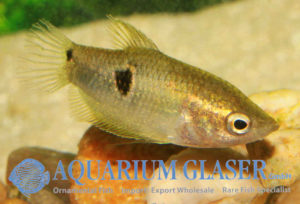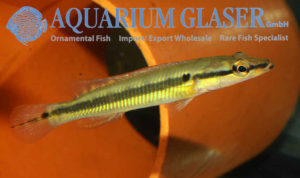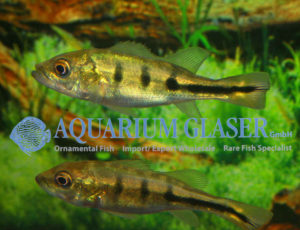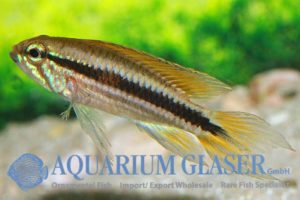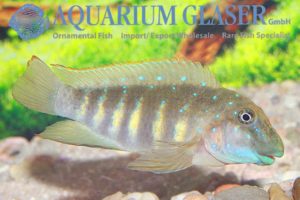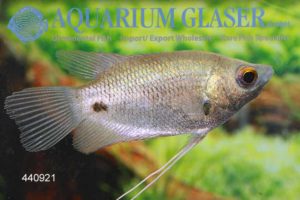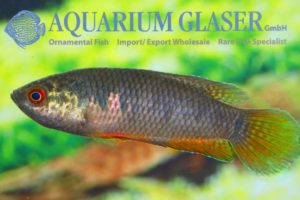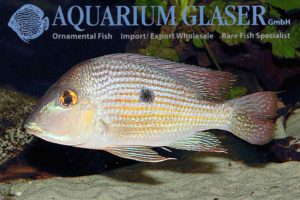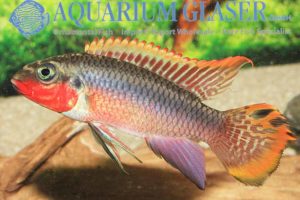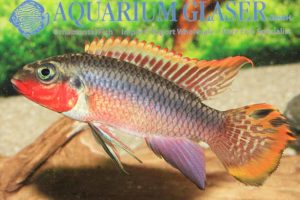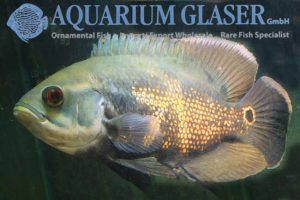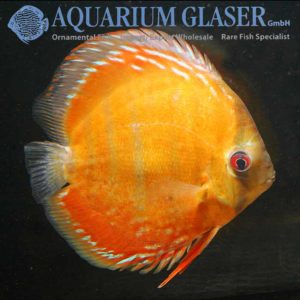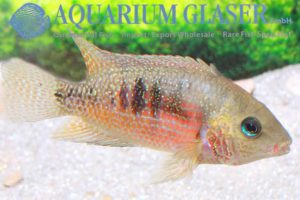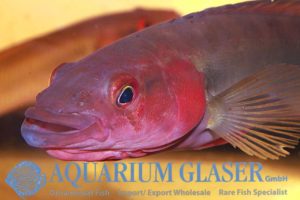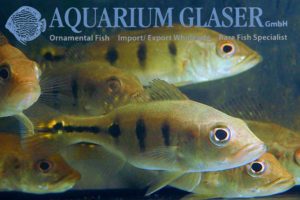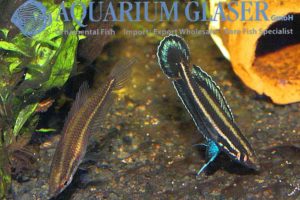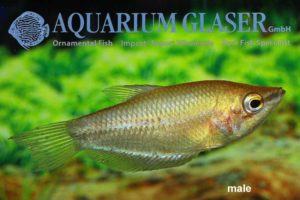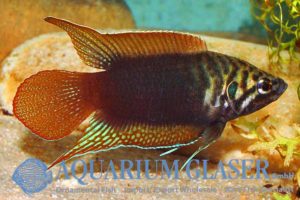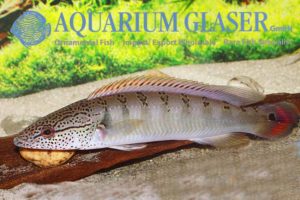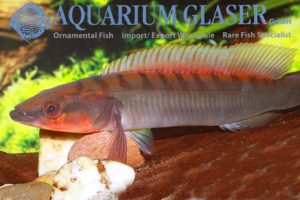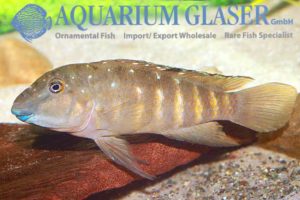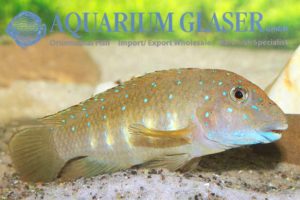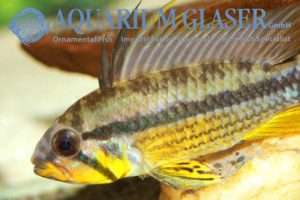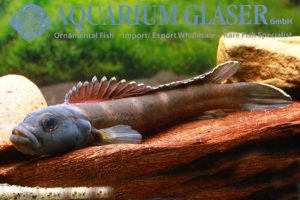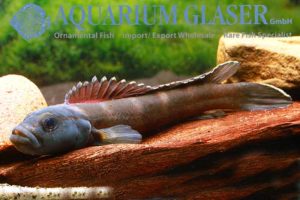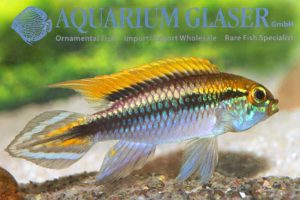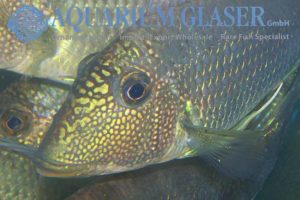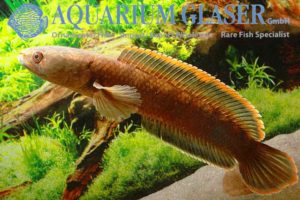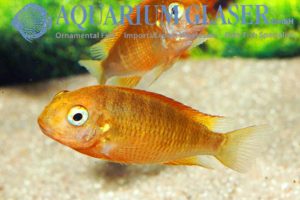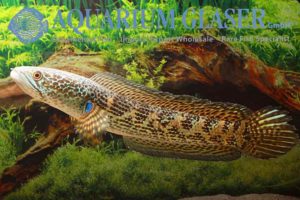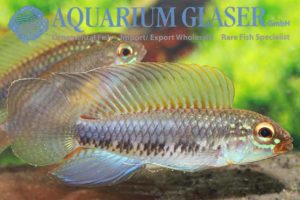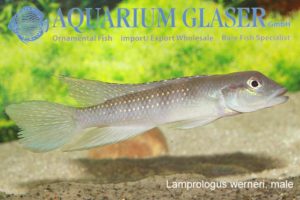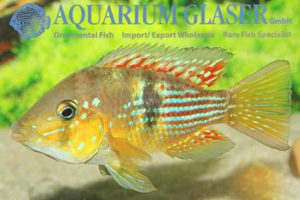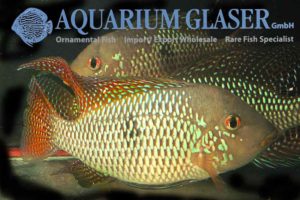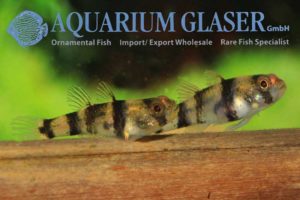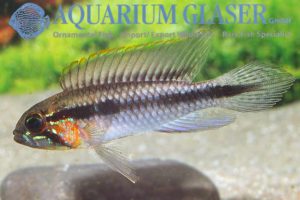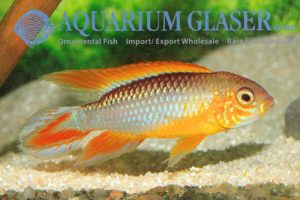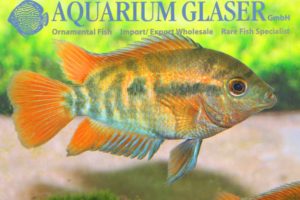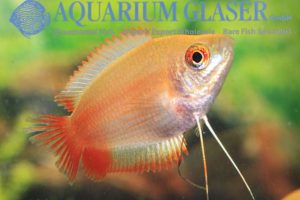Enneacanthus gloriosus

The Bluespotted Sunfish (Enneacanthus gloriosus) is a coldwater fish and a real oldtimer among aquarium fish. Aquarists used to name the up to 7.5 cm long fish “working class discus”, due to its brillant colours and the nice behaviour. However, it was never as expensive as the discus.
Bluespotted Sunfish occur in nature along the southeastern coastal region of the US. Here they live in ponds and slow moving rivers with clear water and a dense vegetation. In the aquarium they are not undemanding. They need clean, clear and preferably soft and slightly acidic water. Moreover they are said to be very anxious and can die when shocked. Neverless it is not a big problem to fulfill these demands and a tank with Banded Sunfish belongs to the most beautiful looks one can have in the whole aquarium hobby.
Like all sunfish, the Banded Sunfish usually refuses flake food, it is better to feed them on frozen and live food The term “coldwater fish” is often misunderstood. In this case it does not mean that the tank for sunfish has to be cooled in living rooms. These species have no problem with temperatures as high as 26°C for some time. However, they need a cool period during winter at 4-10°C, otherwise they will not breed.
In Central Europe this species will not survive extreme winters in the garden pond, so it is better to bring them in a cool cellar room from December to March.
For our customers: the fish has code 803803 on our stocklist. Please note that we exclusively supply the wholesale trade.
Lexicon: Enneacanthus: ancient Greek, means “with nine spines”. This refers to the structure of the dorsal fin. gloriosus: Latin, means “glorious”.
Common name: Bluespotted sunfish
Text & photo: Frank Schäfer
Enneacanthus chaetodon
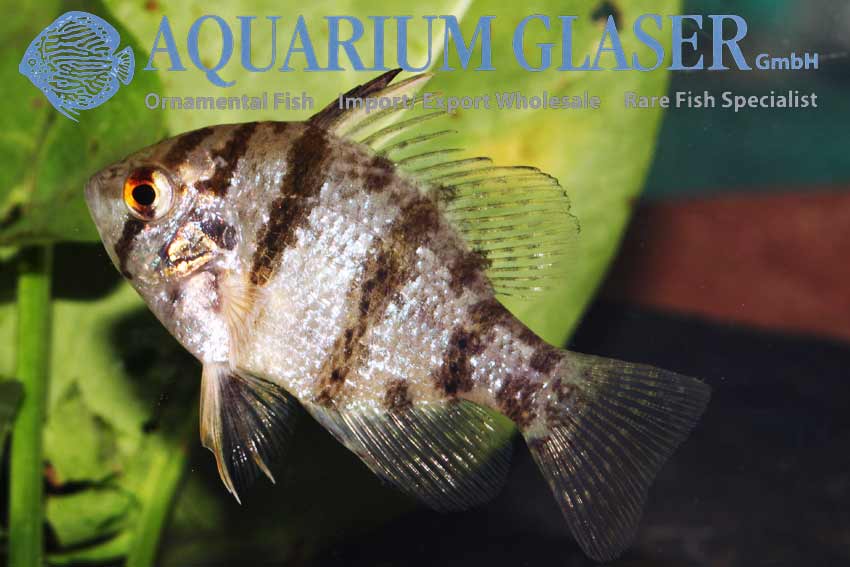
Everything that has been said for the Bluespotted sunfish is also true for the Blackbanded sunfish, E. chaetodon, that also occurs in the wild along with its cousin.
We have received very nice, fully grown German bred ones!
For our customers: the fish have code 803702 on our stocklist. Please note that we exclusively supply the wholesale trade.
Lexicon: chaetodon: ancient Greek, means “with hairlike teeth”
Common name: Blackbanded sunfish
Text & photo: Frank Schäfer
Lepomis gibbosus

The pumpkinseed (Lepomis gibbosus) is one of the most beautiful coldwater fishes. Moreover it has a very interesting behaviour. The species originates from central parts of the North American continent. The continental climate (hot summers, cold winters) makes the pumpkinseed a hardy fish and so it was transferred by humans to many regions as a foodfish.
To Europe it was brought around 1880 for the first time. Since then it became a native fish in Europe but was not able to settle over the whole continent. Nowadays the pumpkinseed is blamed as an unwanted and useless species in Europe. In its natural habitat the fish grows up to 25 cm, but in Europe it stays small. How come? Indigenous North American populations of the pumpkinseed serve as food fish for many predators. The strategy of the pumpkinseed is a a very high reproduction rate. In Europe these predators are missing what leads to a mass-reproduction and the fish stay dwarfish. This phenomenon is also known from other fish species. The perch (Perca fluviatilis) also becomes dwarfish where predators are missing. And so the pumpkinseed usually grows only up to 5-10 cm in Europe.
In aquaria the fish can become much older than in nature. Like all fish the pumpkinseed can grow its whole live through and so aquarium specimens can grow to a captial size. In the garden pond, on the other hand, they usually stay small (around 15 cm). With growing age the adaptability to changes in the enviroment lessenes and so most pumpkinseeds die at the age of around 5 years due to weatherchanges or something similiar. It is wise to buy small individuals (4-5 cm) as their adaptability is high and they easily adopt to live in the new environment.
The garden pond for pumpkinseeds should contain shallow parts with fine sand. Good growth of submerged plants is also important for the fish. Clear and clean water ist preferred. Pumpkinseed are small preators which feed on insect larvae, amphibian larvae, small fish and so on. They can be fed easily with frozen bloodworm, but will almost ever refuse dried food. Males become bigger than the females and are more colourful. A pairbinding is not known in the species, the male will readily mate with any females that will come around. The males defend territories where they take care of the brood until the fry swims free.
For our customers: the animals have code 882500 on our stocklist. Please note that we exclusively supply to the wholesale market.
Lexicon: Lepomis: ancient Greek, means “with scales on the operculum”. gibbosus: Latin, means “humped”
Common name: Common Sunfish, Pumpkinseed
Photo: B. Migge / Aqualog archieves Text: Frank Schäfer
Lepomis cyanellus

This is a close relative of the Pumpkinseed. Lepomis cyanellus, the Green Sunfish, is only very occassionally found in the trade. It differs from L. gibbosus by the much larger mouth. The Green Sunfish also becomes much larger than its cousin, about 30 cm. Thus it represents a beautiful inhabitant for large coldwater aquaria and garden ponds. Our animals are German pond bred and currently 7-9 cm long.
For our customers: the animals have code 882203 on our stocklist. Please note that we exclusively supply the wholesale trade.
Lexicon: cyanellus: Latin, means “blueish”
Common name: Green Sunfish
Text & photo: Frank Schäfer
Centrarchus macropterus

The Flier was a very popular aquarium fish some decades ago; nowadays it is somewhat “out of fashion”. This is very unjustified, as is shown by the wonderful, 8-12 cm long specimens we currently have in stock.
Fliers are calm, majestic fishes that are real eyecatchers for every well planted coldwater aquarium. In the garden pond, these fishes also look extremely beautiful when they stand in shallow water over sandy ground and the sun makes them glitter as if they were powered with gold dust.
Young specimens show a well defined ocellus in the soft part of the dorsal fin which gets lost when the fish gorow to adult ages.
For our customers: the fish have code 803106 on our stocklist. Please note that we exclusively supply the wholesale trade.
Lexicon: Centrarchus: ancient Greek, menas “with spiny back”, referring to the spines of the anal fin. macropterus: ancient Greek, means “with large fins”.
Text & photo: Frank Schäfer
 Discus wild HECKEL BLUE/UATUMA
Discus wild HECKEL BLUE/UATUMA
 Discus wild BLUE COLORFUL/PARACONI
Discus wild BLUE COLORFUL/PARACONI
 Discus wild HECKEL BLUE/UATUMA
Discus wild HECKEL BLUE/UATUMA




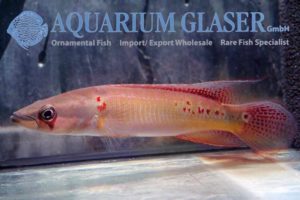

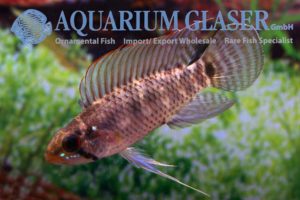
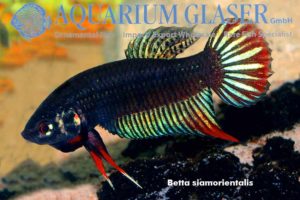
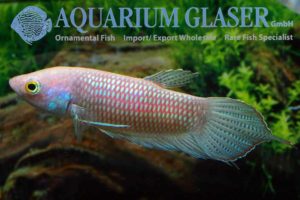
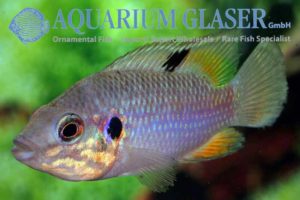
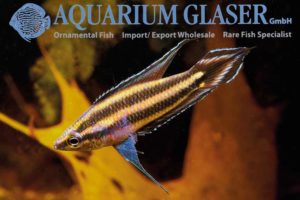
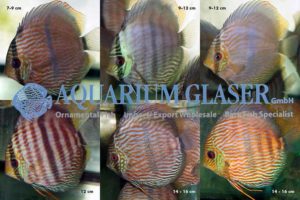






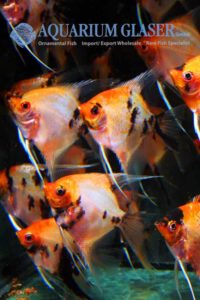
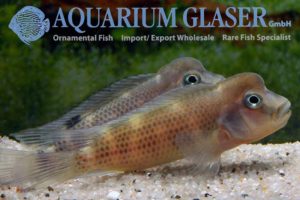
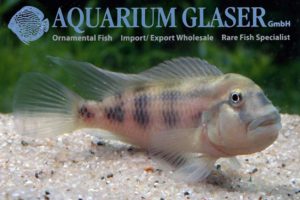
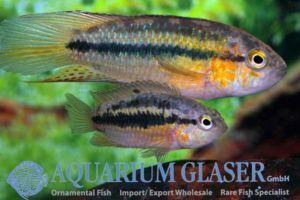
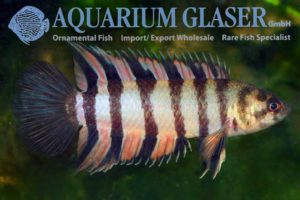
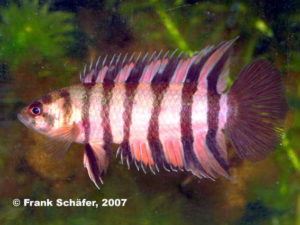
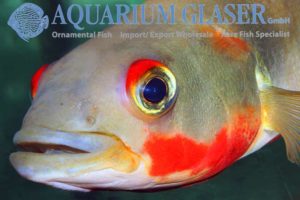
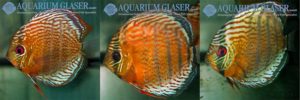
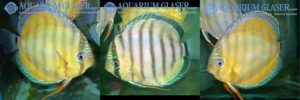
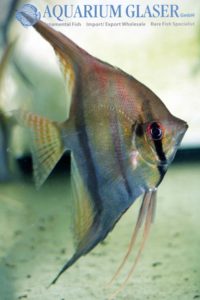





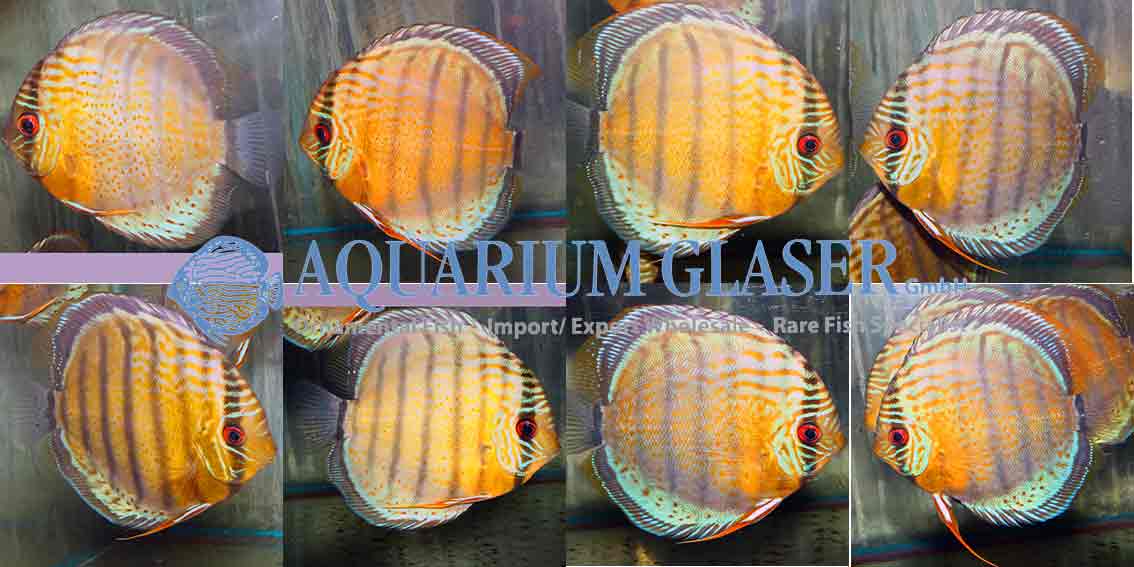
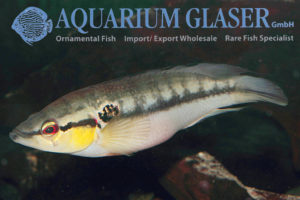
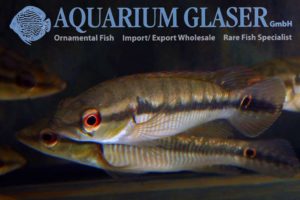






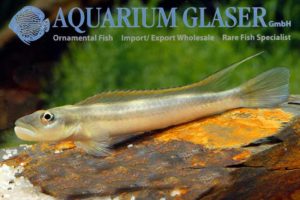
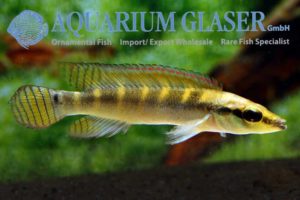
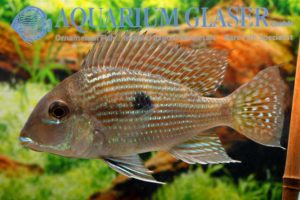
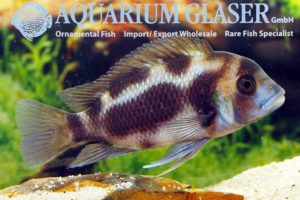
-mann-300x200.jpg)






